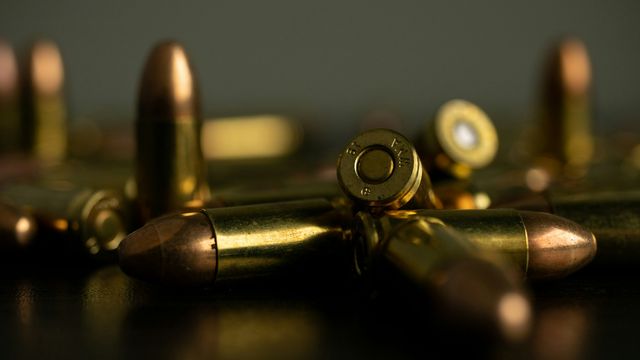A pioneering new test that can recover fingerprints from ammunition casing, once thought nearly impossible, has been developed by scientists at Maynooth University.
Dr Eithne Dempsey of MU’s Department of Chemistry and her recent PhD student Dr Colm McKeever, have developed a unique electrochemical method which can visualise fingerprints on brass casings, even after they have been exposed to the high temperature conditions experienced during gunfire.
For decades, investigators have struggled to recover fingerprints from weapons because any biological trace is usually destroyed by the high temperatures, friction and gas released after a gun is fired. As a result, criminals often abandon their weapons or casings at crime scenes, confident that they leave no fingerprint evidence behind.
“The Holy Grail in forensic investigation has always been retrieving prints from fired ammunition casings,” said Dr Dempsey. “Traditionally, the intense heat of firing destroys any biological residue. However, our technique has been able to reveal fingerprint ridges that would otherwise remain imperceptible.”
The team found they could coat brass casings with a thin layer of specialised materials to make hidden fingerprint ridges visible. Unlike existing methods that need dangerous chemicals or high-powered equipment, the MU Department of Chemistry process uses readily available non-toxic polymers and minimal amounts of energy to quicky reveal prints from seemingly blank surfaces.
It works by placing the brass casing of interest in an electrochemical cell containing specific chemical substances. When a small voltage is applied, chemicals in the solution are attracted to the surface, coating the spaces between fingerprint ridges and creating a clear, high contrast image of the print. The fingerprint appears within seconds, as if by magic.
“Using the burnt material that remains on the surface of the casing as a stencil, we can deposit specific materials in between the gaps, allowing for the visualisation,” said Dr McKeever.
Tests showed that this technique also worked on samples aged up to 16 months, demonstrating remarkable durability.The research has significant implications for criminal investigations, where the current assumption is that firing a gun eliminates fingerprint residues on casings.
“Currently, the best case of forensic analysis of ammunition casings is to match it to the gun that fired it,” said Dr McKeever. “But we hope a method like this could match it back to the actual person who loaded the gun.”
The team focused specifically on brass ammunition casings, a substance that has been traditionally resistant to fingerprint detection and is the most common type of material used globally.The researchers believe that the test for fingerprints on brass they have developed could be adapted for other metallic surfaces, expanding its range of potential forensic applications, from firearm-related crimes to arson.
This technique uses a device called a potentiostat, which controls voltage and can be as portable as a mobile phone, making it possible to create a compact forensic testing kit.
“With this method, we have turned the ammunition casing into an electrode, allowing us to drive chemical reactions at the surface of the casing,” said Dr McKeever.
While promising, the new technology faces rigorous testing and validation before it could potentially be adopted by law enforcement agencies worldwide. The research, funded by Research Ireland and Maynooth University, is published in a leading forensic science journal, has significant implications for global policing.
Reference: McKeever C, Dempsey E. Electrodeposition of redox materials with potential for enhanced visualisation of latent finger-marks on brass substrates and ammunition casings. Forensic Chem. 2025;44:100663. doi: 10.1016/j.forc.2025.100663
This article has been republished from the following materials. Note: material may have been edited for length and content. For further information, please contact the cited source. Our press release publishing policy can be accessed here.

